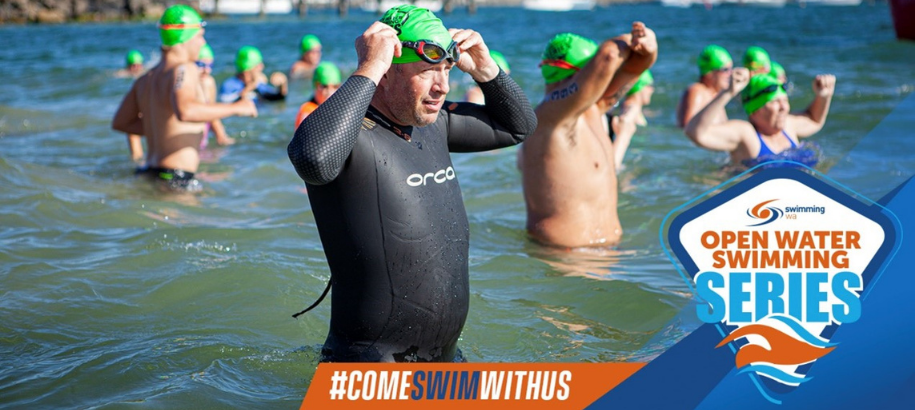
You’re either one or the other. The toasty-warm open water swimmer who does not seem at all affected by colder water, or the type who feels like you’re a floating Antarctic iceberg.
If you’re the latter, it can feel like the chill takes over your body to the point of not being able to swim efficiently or think clearly. In severe cases, it can lead to pulling out of races or hypothermia.
As we head into another beautiful open water swim series over the next several months, there are many swimmers looking for information on how to stay warm during their races in the ocean and lakes.
Below are some simple ways of staying toasty during open water swims. These tips were provided by Jarrad Lawford, 2012 Rottnest Channel Swim solo winner, former Australian Age Open Water Champion and Qualified Exercise & Sport Scientist.
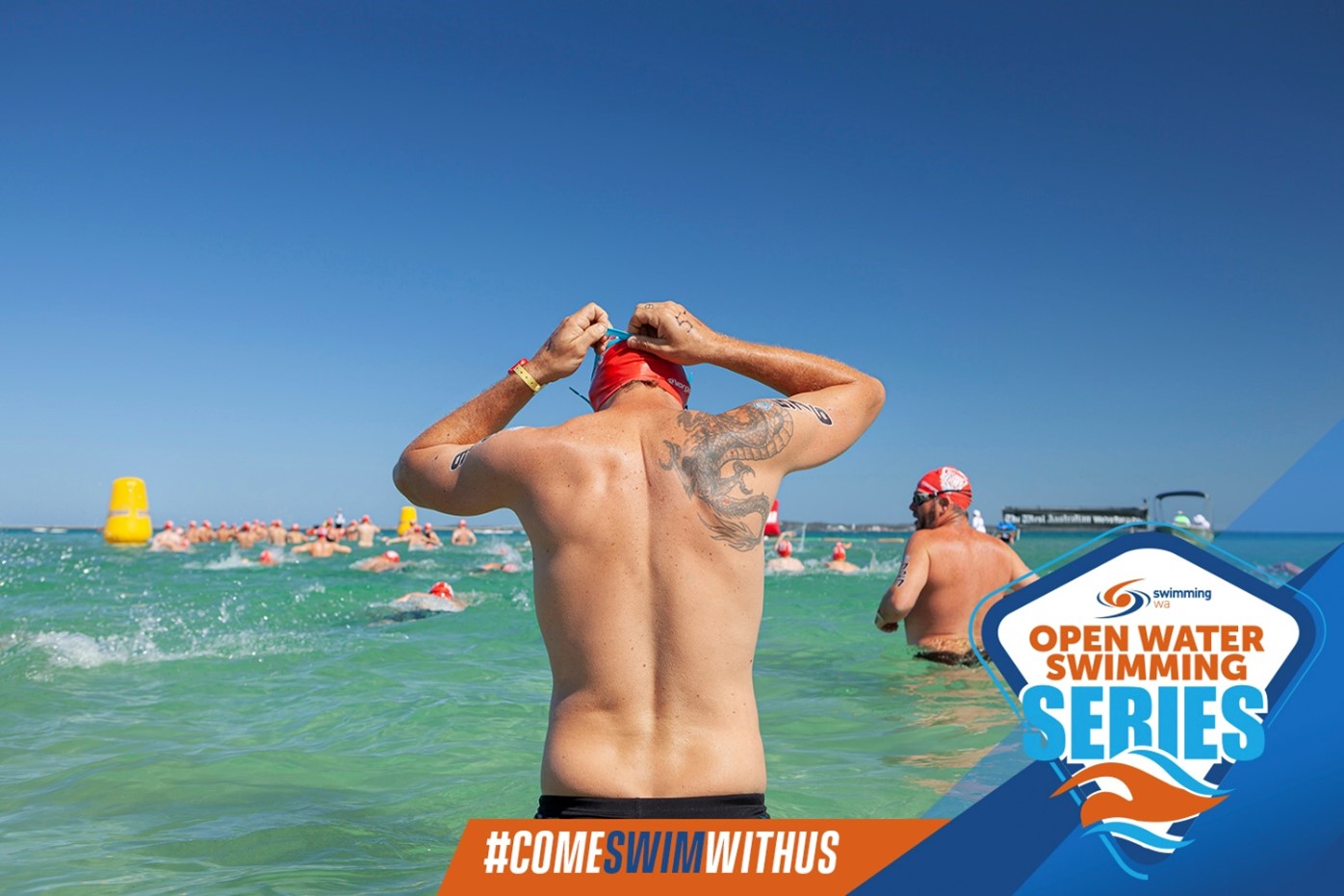
1. Wear two caps
You lose most of your heat through different areas of your body. A large majority of that heat escapes through your head and ears. Wearing two caps can help reduce how much of that heat escapes during your swim.
Wearing a neoprene cap also works wonders. They are better suited for slightly cooler water such as the freshwater lakes than your standard latex caps and tend to be thicker. These can be worn underneath your coloured OWS Series caps.
Another benefit of wearing neoprene caps is the goggle straps seem to grip better to this texture than latex, meaning it’s less likely they might come off or move around during your swim if worn between the two caps.
If you can’t get your hands on a neoprene cap, don’t stress. Two regular latex caps also lock in more heat.
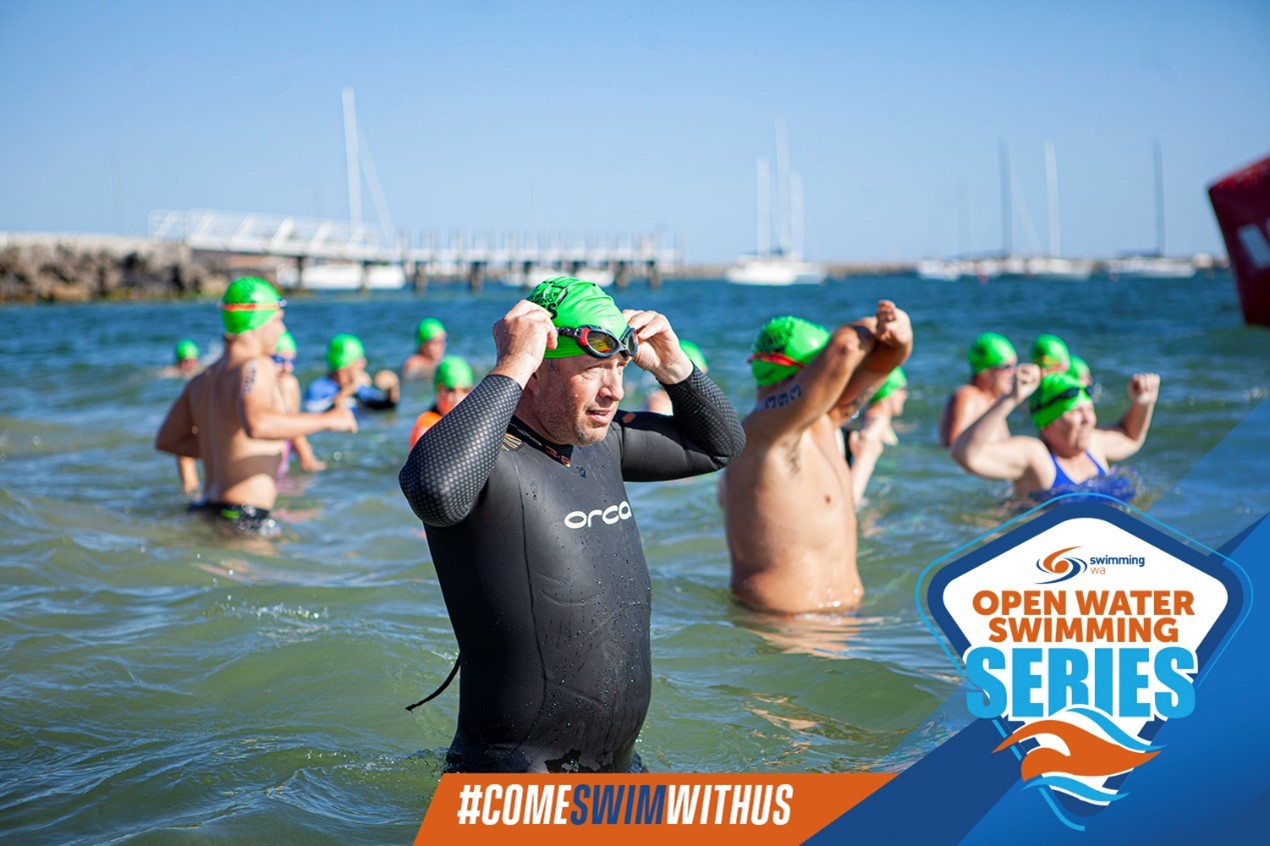
2. Wear a full-body wetsuit
At all our OWS Series events, wetsuits are optional. They are the best way to keep warm during your swim. The water temperature itself determines whether swimmers wearing wetsuits are eligible for prizes.
Wetsuits at our OWS series events are only compulsory for competitors if the water temperature is below 18 degrees Celsius and they are swimming more than 5km under FINA rules and by-laws.
If the water temperature is between 18-20 degrees Celsius, prizes are on offer to those who decide to wear wetsuits.
If you decide to wear a wetsuit in water temperature over 20 degrees Celsius, it means you will not be eligible for prizes, but at least you will be nice and warm!
While the choice of wearing a wetsuit is entirely up to you, they are usually worn more when races occur in freshwater or land-locked bodies of water as these tend to be slightly lower in temperature.
If you are wearing a wetsuit, try to avoid a sleeveless suit as this allows heat to escape through your armpits, which is another major heat-escaping area of your body.
Wetsuits are great for keeping you warm and providing more buoyancy as you swim, however, they can alter your technique because of this.
The key to swimming in a wetsuit is try not to fight how the wetsuit changes your technique. You may find your arms move wider around your body or personally find it difficult to raise your elbows higher with each freestyle stroke.
Simply try to rotate with each stroke as much as possible and this will help you with your underwater catch. The extra buoyancy of the wetsuit will help you move through the water more efficiently and yes, wetsuits are faster than regular bathers.
If you are permitted to wear a wetsuit for any OWS races, make sure the wetsuit complies with FINA rules and by-laws. It also needs to completely cover your torso, back, shoulders and knees.
Don’t have access to a wetsuit? No dramas! There is plenty of other measures you can take to keeping warm during a swim.
Need to check the wetsuit rules? Click here to see the wetsuit laws from FINA.
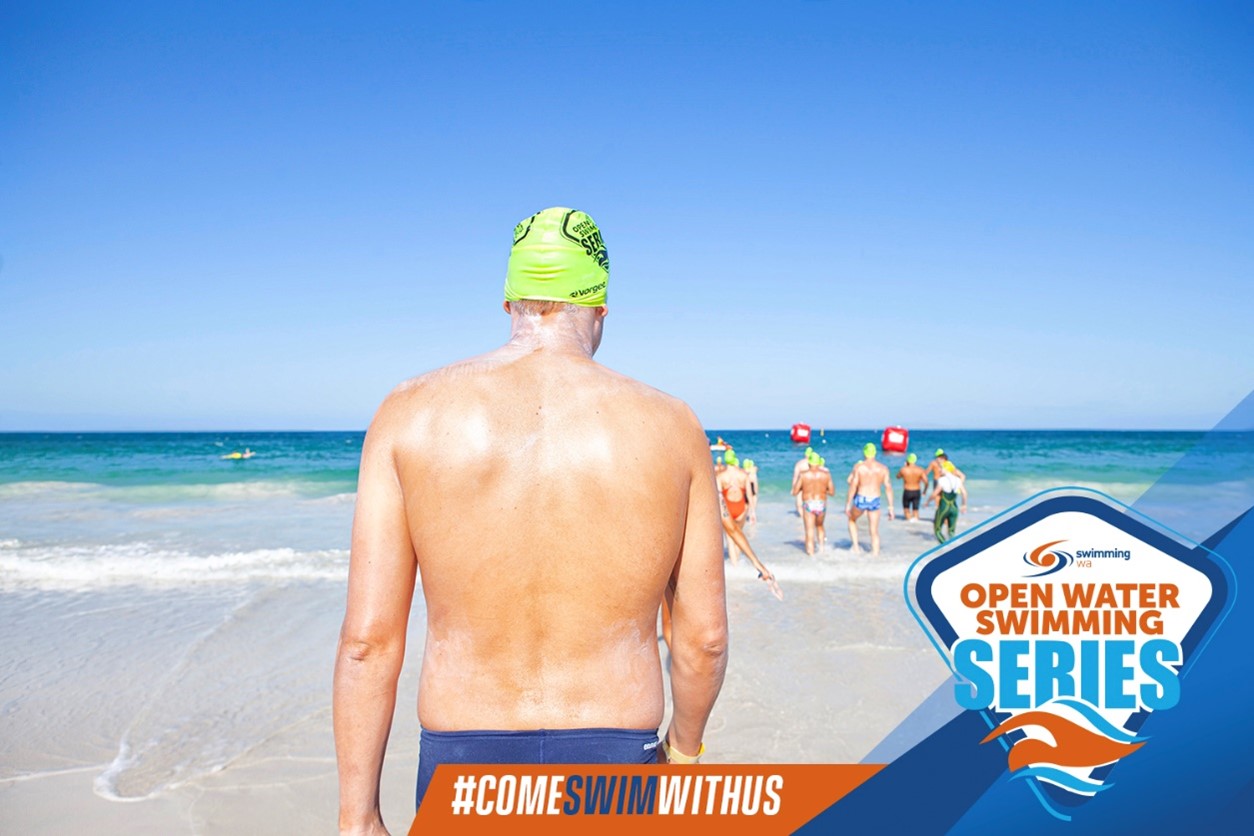
3. Cover your body in wool fat or vaseline
Sound gross? It does work wonders and essentially acts as a wetsuit if you don’t have one.
The places on your body where heat escapes from the most is your head, neck, armpits, groin and feet. Your head, neck, wrist and ankles account for around 60% of this heat loss due to increased blood flow in comparison to the rest of your body.
For open water swims, if you want to prevent heat escaping your body quickly, try applying wool fat or vaseline to your neck, armpits, wrists, ankles and feet.
Your feet are another part of your body that play a vital role in regulating your body temperature. By applying wool fat, you will lock this heat in.
You will be amazed at how well this reduces the impact of the cold water on your feet when you kick. Not to mention, no one will want to swim in your drag and repeatedly touch your feet if they are covered in wool fat!
Vaseline is not as good as wool fat at keeping you warm, however it is still effective. It also means you slip through the water slightly easier and it can also reduce the effects of jellyfish stingers during ocean swims as the tentacle barbs slip off, rather than penetrate your skin.
Just a heads up, vaseline and wool fat are tough to get off your bare hands and if you accidentally wipe this on your goggles, they will become blurry. Try and use rubber gloves or a plastic bag over your hand when applying this to your body.
Once you finish swimming, use soap with warm water or even baby wipes to remove wool fat or vaseline from your body.
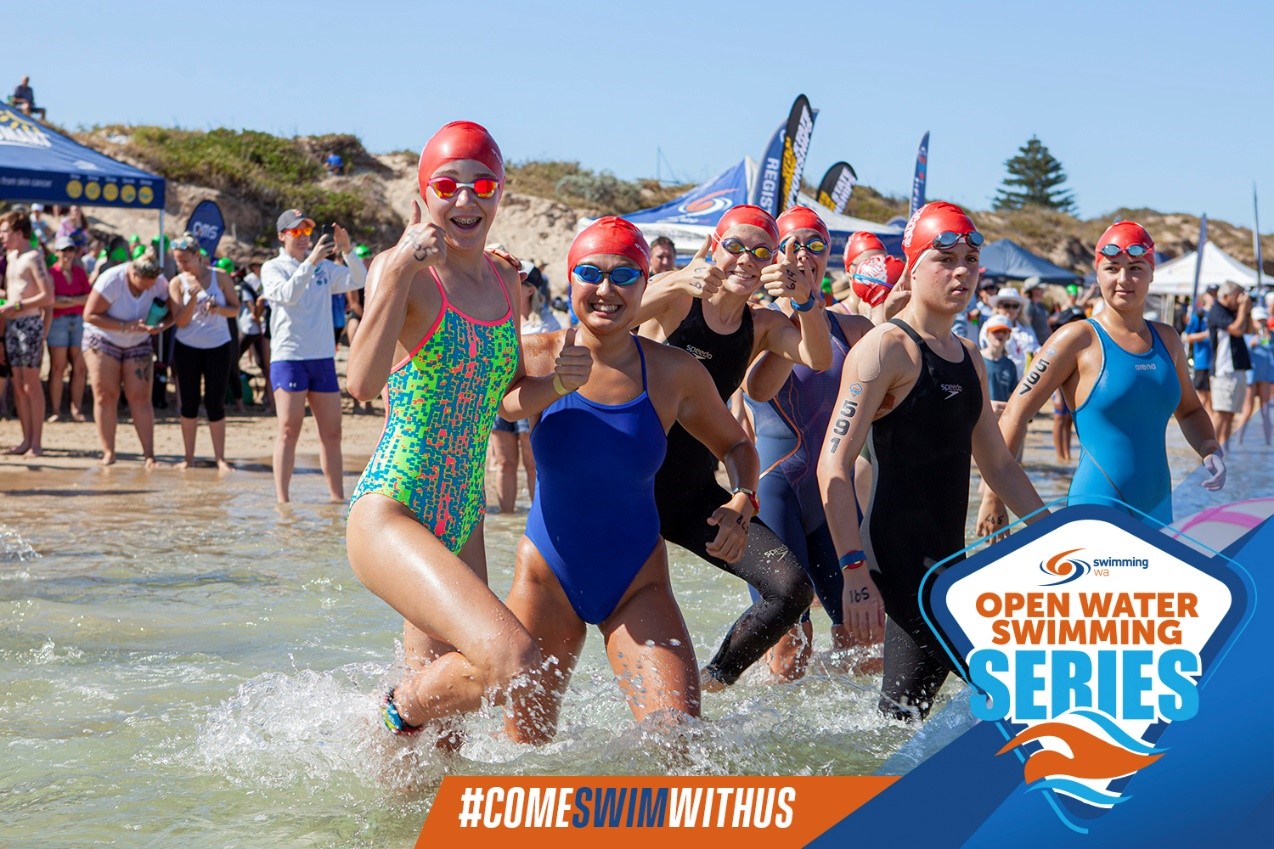
4. Wear earplugs
Don’t worry, you’ll still hear our race start!
Ever felt your ears during a hard work out? They become red hot.
It’s another pathway for your body to expel heat while exercising. A simple way of preventing this heat loss is by wearing rubber ear plugs or blue-tack.
Sometimes wearing a cap is not enough, especially when your ears poke out from underneath and water can enter your ear canal.
This will cool down your core-temperature very quickly. I’ve used ear plugs in colder water before and it made a big difference. It also felt quite peaceful not hearing the constant splashing of water in and out of my ears too.
5. Practice swimming in colder water
Practice makes perfect.
When your body first enters cold water, it can be a shock to your system that causes your body to constrict blood vessels and transfer most of your blood flow to your internal organs rather than close to your skin, where most of the heat is lost.
That initial dip in the water can leave you hyperventilating or panicked. It’s very important you try to stay relaxed and breathe calmly.
In Canada I swam under the ice for 30 metres. To this day I have never experienced cold like that before in my life and initially upon entering the water I was hyperventilating very quickly.
It wasn’t until I started to breathe as slowly and deeply as possible that my body started to relax and deal with the cold. This made a huge difference to how warm I felt even though it was freezing.
As you submerge, try to inhale and exhale deeply as your lungs will constrict as you enter colder water initially. Just aim to catch your breath before you start increasing your swimming speed.
The more you practice this, the better your body will acclimatise. With more stress comes more psychological impacts of colder water. Being mentally comfortable helps you stay physically relaxed and helps maintain the notion of feeling warm.
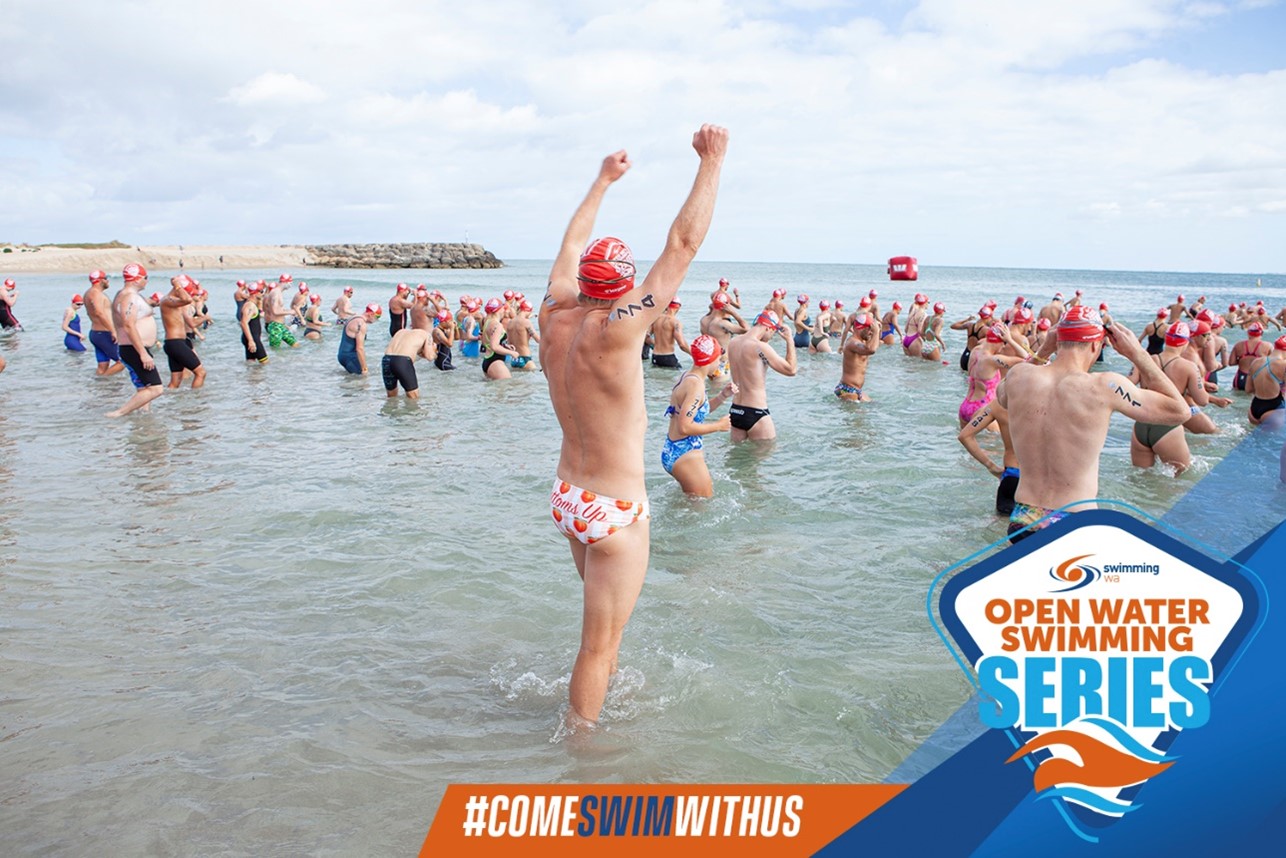
6. Warm-up for 10-15 minutes before your race
This is best done out of the water with simple arm and leg swings followed by stretching for at least five minutes to promote warm blood flow into your muscles.
This warm-up helps minimise the shock effect of colder water on your body as you enter. It means you can pick up a stroke rhythm much faster at the start of the race, which is crucial.
You only need to warm up in the water for around 1-2 minutes before your swim. Spending 5-10 minutes remaining stagnant in the water before the race start means you will lose body heat and risk developing that ‘ice-cream headache’ feeling.
You want to be as warm as possible at the race start. Even sprinting in short bursts out to the start line is great for preparing for the race. Keep moving before the race and make sure your whole body is submerged so you get used to the water temperature.
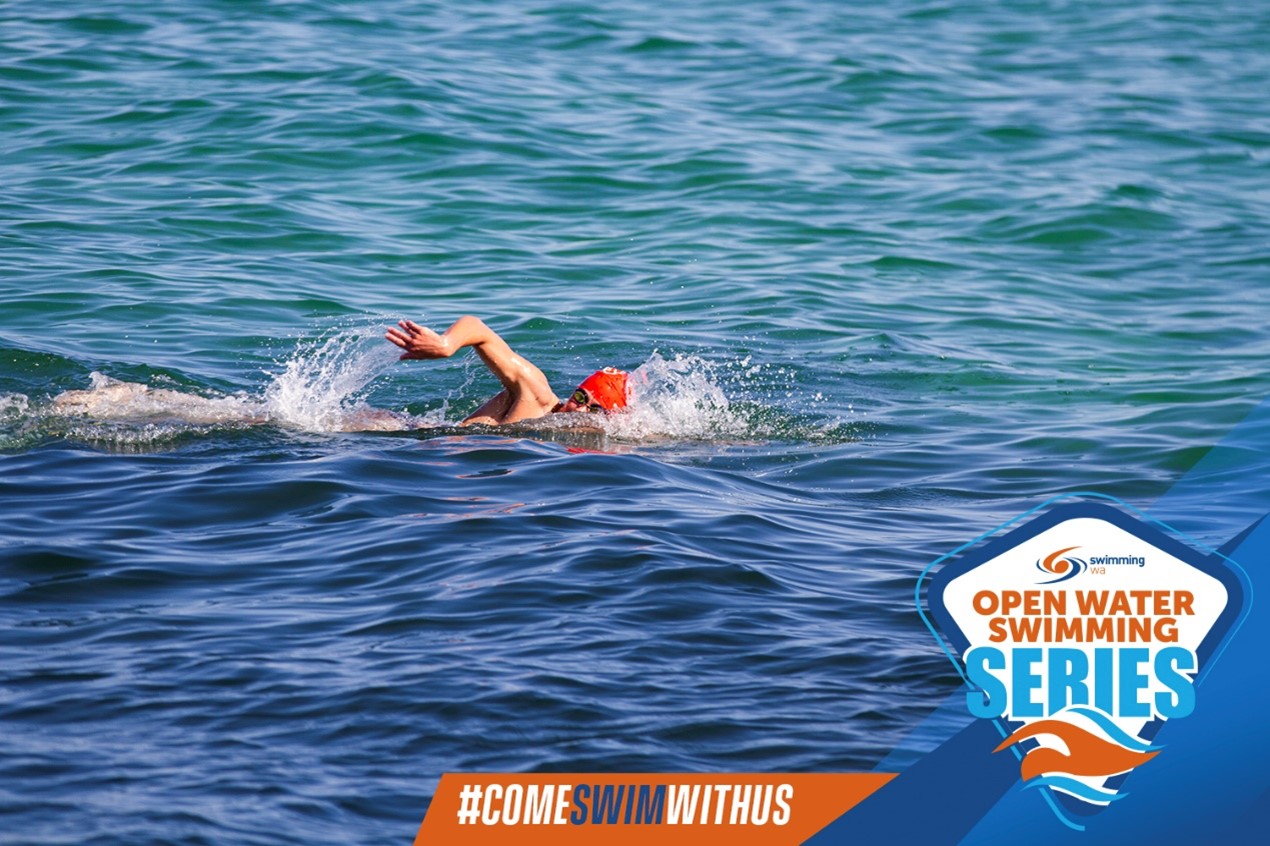
7. Exhale underwater before breathing
This is incredibly important and easily overlooked, even by the most experienced swimmers.
The urge to breathe is not oxygen wanting to get into your lungs, it’s carbon dioxide wanting to get out. Many swimmers will forget to exhale the carbon dioxide underwater before they breathe, meaning they need to breathe out and in within about half a second when they turn their head to the side.
Not only does this mean you’re getting in only half a breath during each inhale, but not exhaling underwater means your carbon dioxide levels in your blood start to rise.
This eventually produces lactic acid as a by-product, which causes your muscles to lose this increased body heat through your skin as you try to control your core body temperature.
The key to staying warm is staying relaxed. Breathing as efficiently and relaxed as possible plays a huge part in this.
When you breathe, air is brought into your body and warmed, before being exhaled. This results in a significant source of your heat loss. If you are stressed or hyperventilating in colder water, this process is increased and sped up.
Try and keep your inhales and exhales relaxed so you maintain control over your core body temperature. Tensing up your diaphragm and muscles during breathing also makes your body sink slightly lower.
An easy way to prevent lactic acid build up in your muscles and more heat loss is simply by exhaling underwater before you breathe. It also means you will inhale more oxygen with each breath and maintain improved blood-oxygen levels.
Buoyancy is key to swimming faster and a relaxed breathing pattern not only helps you control your body temperature better, but it also helps benefit your swimming efficiency by keeping your body position slightly higher in the water.
Ever wondered why wetsuits are slightly faster? It’s because you sit higher in the water. The super-suits in the pool from the late 2000s smashed nearly every swimming world record within two years because they provided more buoyancy, therefore less drag.
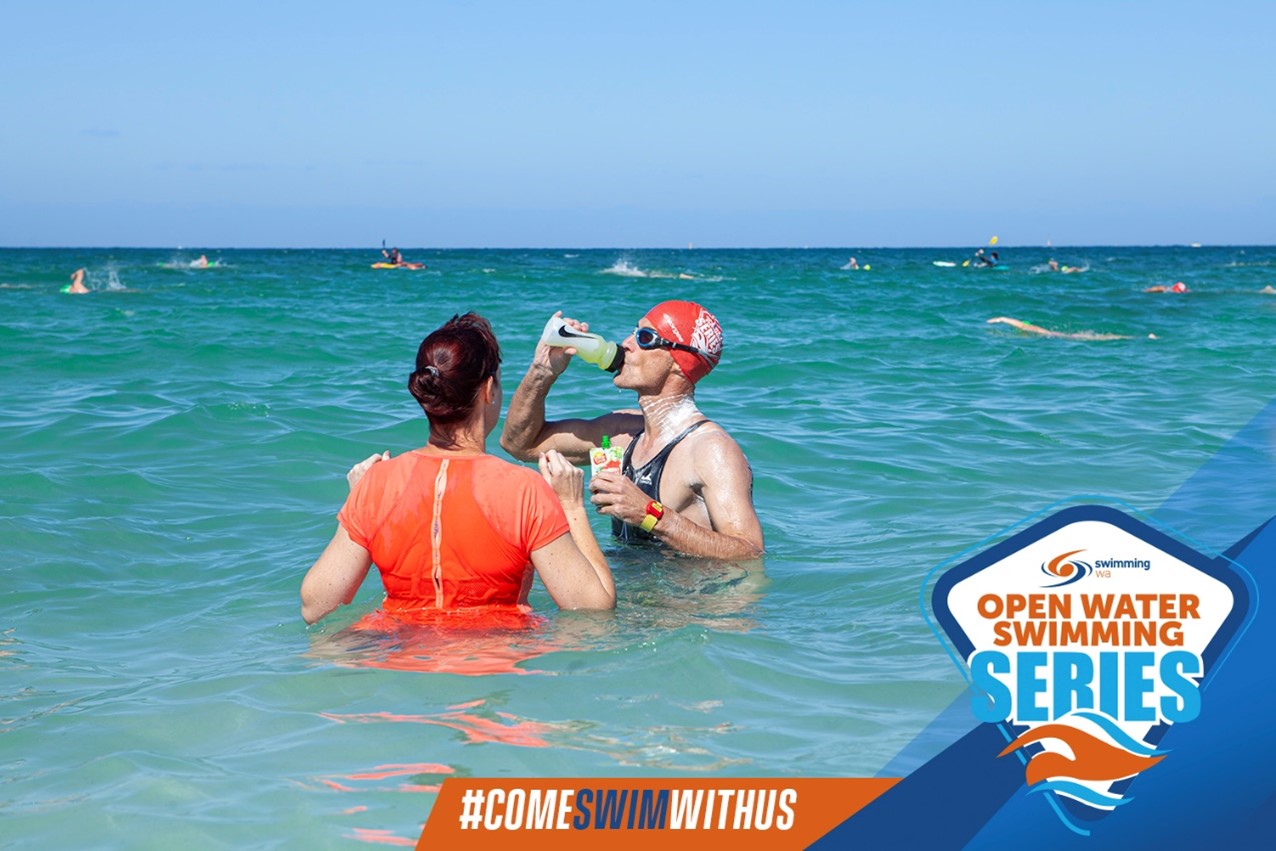
8. Carbohydrate loading and mid-race feeding
Eating plenty of proteins and carbohydrate-rich meals leading up to your swim throughout the week means you will store this energy as glycogen in your muscle.
It means you will have more energy at your disposal during open water swims. The more energy you carry into your race, the more heat will be produced as you swim, which in turn can look after your core body temperature for longer.
It is only when swimmers really start to feel fatigued and burn through most of their energy stores that they will start to feel the effects of cold water. Swimmers doing more than 5km are usually more susceptible to this as they are in the water for longer.
While mid-race feeding is incredibly important for maintaining your energy levels for 2.5km, 5km, 10km or longer swims, a huge majority of the energy you burn will come from your diet in the week leading up to the swim.
Golden rule? Eat plenty of healthy vegetables, pasta, bread, rice, oats and fruit leading up to races and avoid processed or high-sugar foods.
Carbohydrate loading does not mean you need to eat more food than you usually would. Simply replace your regular meals with food that is higher in carbohydrates and protein. If you consume carbohydrate-rich food in excess levels this can leave you feeling bloated on race day.
If you are going to consume liquids during a race, never have an ice-cold drink. This will cool your core body temperature down significantly, slow down your digestion speed and can leave you with an upset stomach. Feeding liquids need to be at room temperature.
Consuming a warm/hot coffee mid-swim which is able to be drunk quickly without burning your mouth is also a great energy boost and quick method of warming your core body temperature up.
Need some professional diet tips? Check out Fuel To Go & Play’s advice on pre-swim food here.
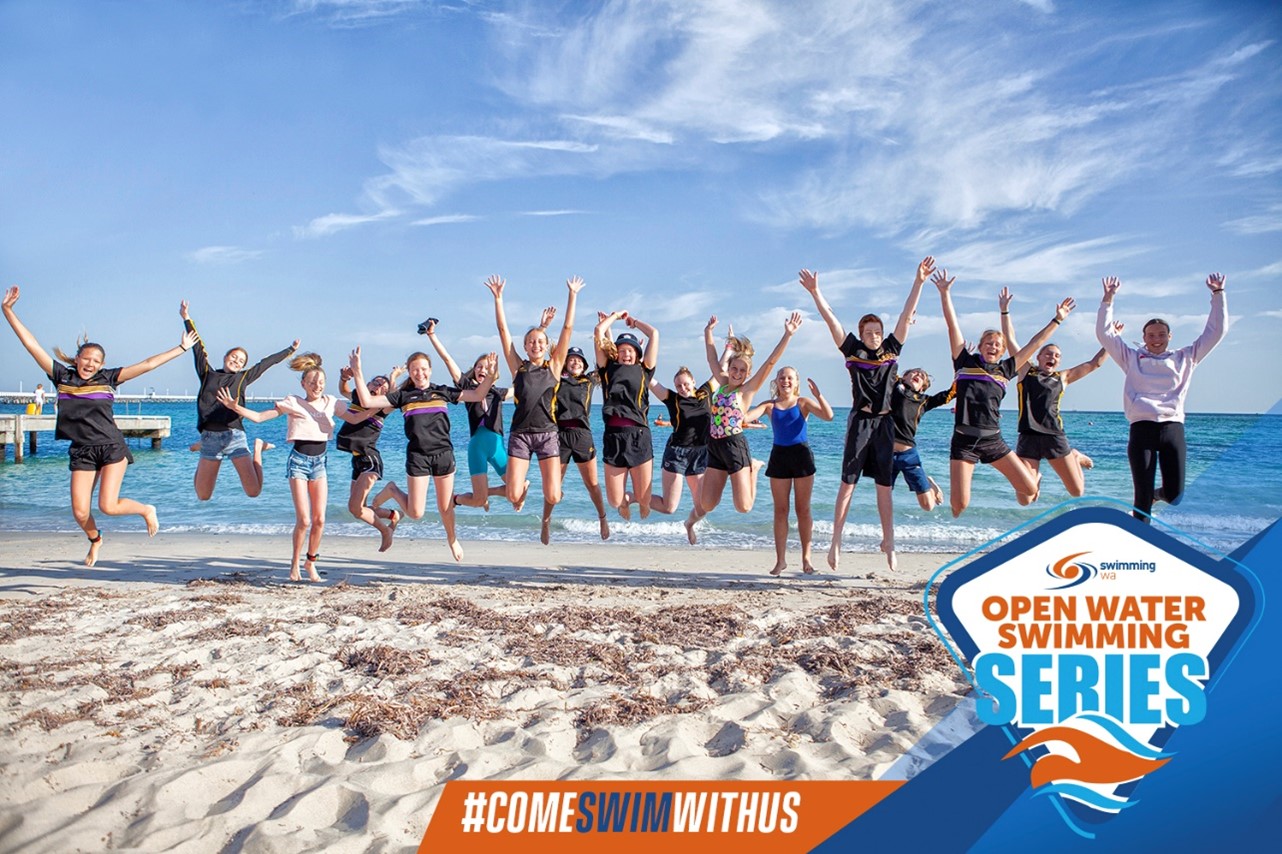
9. Spot the warning signs
It’s important that you know the warning signs of your body getting cold. The best way to avoid hypothermia is by recognising the stages of what happens and take action quickly.
During the first stage, the body will start to shiver. This is a natural response from all of us when our core body temperature drops. Shivering is essentially an automatic tightening and relaxing of the muscles in rapid succession to warm you up.
Your circulation will also slow down as blood moves away from your skin to prevent more heat loss and keep your internal organs warm. If you’re shivering, let someone know immediately or consume a hot beverage.
One simple tip I found if I was cold during a swim was to kick as hard as possible for 10-20 seconds. This increases your heart rate and blood flow and I’ve found that many open water swimmers are heavily reliant on their upper body, rather than their kick.
Your legs have the largest and strongest muscle groups in the body. Try short kicking bursts and you will find that burn does help warm up your core body temperature.
As hypothermia moves into the second stage, your pulse will slow down and weaken along with your breathing. Coordination decreases and you may even start to feel sleepy or confused. The shivering effect from the first stage will also stop as your body approaches exhaustion.
The last stage can quickly lead into unconsciousness with no breathing or pulse.
It sounds daunting, but an easy way to prevent this from happening is to do something about it the moment you start shivering.
Consuming a hot tea or coffee and kicking as hard as possible for 10-20 seconds are quick and easy ways to increase blood flow and your core body temperature.
If you find you are cold no matter what you try, it’s time to pull the pin on the race before it gets worse.
This means applying a dry towel and compressing your neck, chest and groin with dry clothing, heat packs or consuming warm beverages.
There are always emergency experts on standby to warm you up quickly. The golden rule is to know when to stop if nothing seems to be working.
Have any questions? Ask the OWS crew on race day and we will help you out. We’re here to make your swims as enjoyable as possible and many members of our team are experienced open water swimmers themselves.
See you on race day!

